5 Very Icelandic Foods Easily Found in Supermarkets
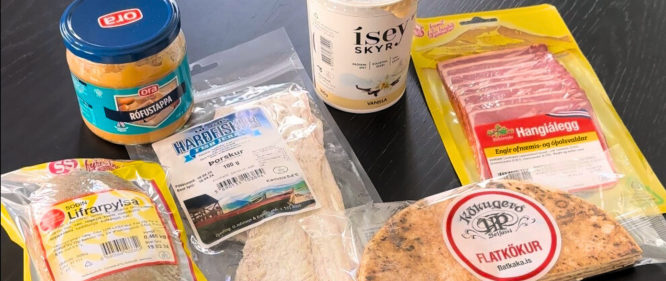
Icelandic food culture is often strange and sometimes downright worrying, that is maybe not surprising when it evolved on an isolated island in the middle of the Atlantic. Icelandic food is essentially survival food in the sense of how will I survive the winter and or the next eruption? 1200 years later here we still are thanks to these superfoods. If you want to experience this food for yourself then here we have 5 Icelandic foods you can easily find in any supermarket to try while you´re visiting or to bring home to torture your loved ones with.
Flatkaka
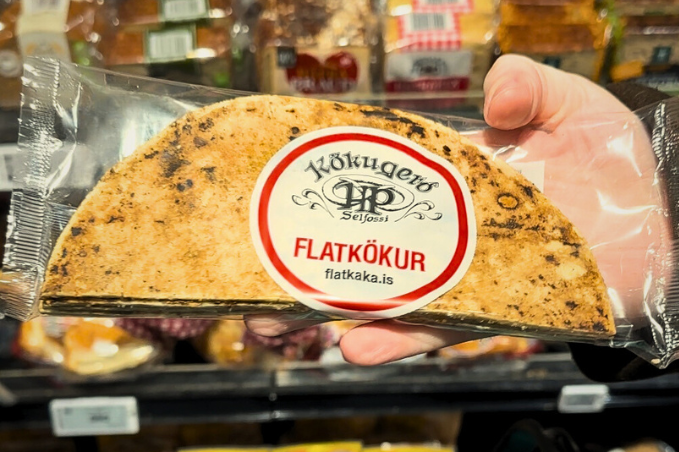
We will start you off easy on this list with the traditional flatkaka which literally means flat cake, the flatkaka is more of a thin bread though and not so much a cake and can be eaten on its own with a bit of smjör (butter), with Nordic sliced cheese, or with hangikjöt which we will talk about next. Flatkaka is also excellent with graflax (cured salmon) and graflaxsósa (sweet mustard), and often part of the holiday meals. The flatbread is unleavened rye and is made by mixing boiling water with flour and then cooking the dough, wheat flour is often used with the rye. The final result is a soft, round, thin, and dark pancake-like bread. The most traditional method of cooking it is to place the dough directly over hot coals. Today, most people use a hot pan, and it is preferable to cook it outside or in a well-ventilated area to avoid filling the house with smoke.
Hangikjöt
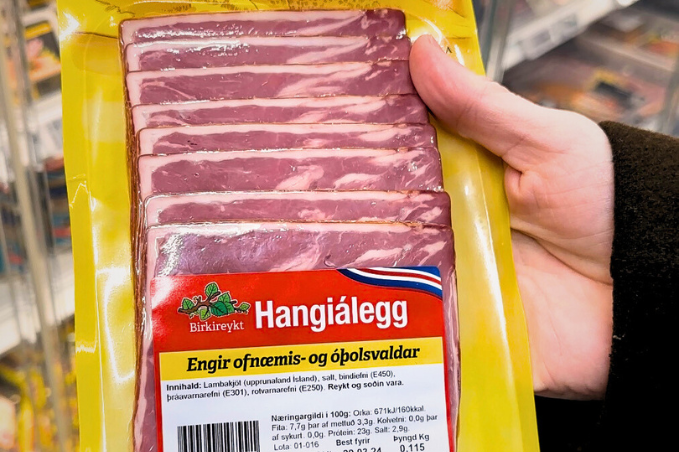
This smoked lamb's meat is one of the most traditional foods you can find in Iceland. Hangikjöt (hanging meat) was traditionally smoked in dung as we lacked proper wood since the first settlers decimated the forests probably to smoke their hangikjöt. Smoking meat was one of the many ways Icelanders had to preserve their meat for the long Arctic winters, but the tradition has stayed with us because of its flavor. Today thankfully birch is most commonly used in the smoking process. The way it is prepared is usually by hanging a leg of lamb from the rafters of a smokehouse in which a fire burns constantly for two to three weeks. After it has been smoked, the modern, birch-smoked hangikjöt is packaged, either whole and usually found on the bone around Christmas time since this is a staple during the holidays or thinly sliced and sold like deli meat ready for consumption. Just toast a slice of flatkaka, coat it with a generous amount of butter and add a couple of slices of hangikjöt on top. This makes a great snack when out camping or during day trips as you can fold the flatkaka and make this combination into a thin sandwich. During the holidays or special occasions it is sliced straight off the bone and paired with potatoes in upstúf (Icelandic bechamel), peas (from a tin, Ora baunir is the preferred label), carrots and boiled cabbage.
Harðfiskur
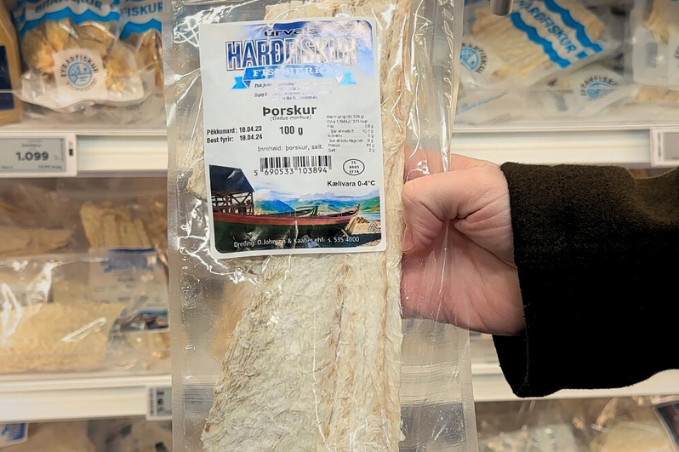
Now moving on to the foods that might not agree with everyone but that have been a staple of Icelanders' diet for centuries before ending with a very popular dairy treat. Harðfiskur (dried fish) has been sustaining the Icelandic population for as long as the island has been inhabited. This was often the last resort during the last months of winter as it would keep for quite a while. It is considered to be a very healthy snack and a very good source of protein. This healthy snack is made by drying fish, most often cod, but also haddock and wolffish, in dry Icelandic air for up to six weeks until it becomes cured. Once it’s dried, the fish turns hard and yellow, and isn’t really edible at that stage. The next stage is to pound it with a mallet, turning it into the softer harðfiskur that Icelanders know and love. All over the island you’ll see harðfiskur hanging to dry on wooden trestles. Up close, the drying trestles look eerie, with fish swinging in the breeze and a strong stench of rot in the air. But worry not, once it has landed in the supermarket it is well packaged and the fishy smell won't hit your nostrils until you open it, so we recommend not doing it in your car unless you want it to stay the whole journey. Harðfiskur comes in different forms, either in filets with or without the skin or in bite sizes. The bite sizes are usually eaten on their own like chips but in filet form can be on its own or you can rip it in manageable pieces and lather butter on top. The haðfiskur with butter is a popular snack for Icelandic children as they can chew on it for a while and it keeps them busy.
Lifrarpylsa
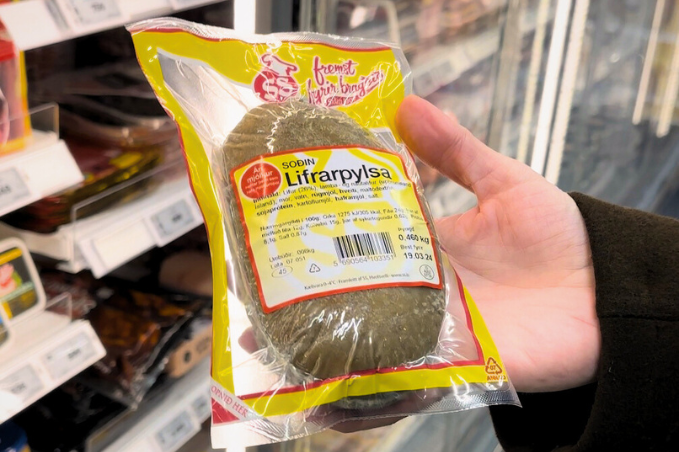
This next one might not be to everyone's taste; it is usually one of the foods that is the most difficult to get children to eat and that adults seldom relish putting on their plates. Lifrarpylsa is liver sausage made from sheep's livers; it is prepared in pouches, cut and sewn from the stomach, similar to haggis, or artificial non-edible pouches can be used. They are filled with a mixture of sliced/minced fat (mör) or suet, flour (rye and oats), rolled oats, and finely-minced liver (sometimes kidney is also blended in). The pouches are sewn shut after filling, then they are slow-boiled for 2–3 hours. Lifrarpylsa may be eaten hot or cold, and sometimes it is pickled in whey. The liver sausage has been known to be prepared in many different ways here in Iceland, usually to mask the liver taste. One way is to slice it and fry it lightly on a pan with a bit of sugar, the other is to cut it in cubes and smother it in strawberry skyr and heavy cream.
Skyr
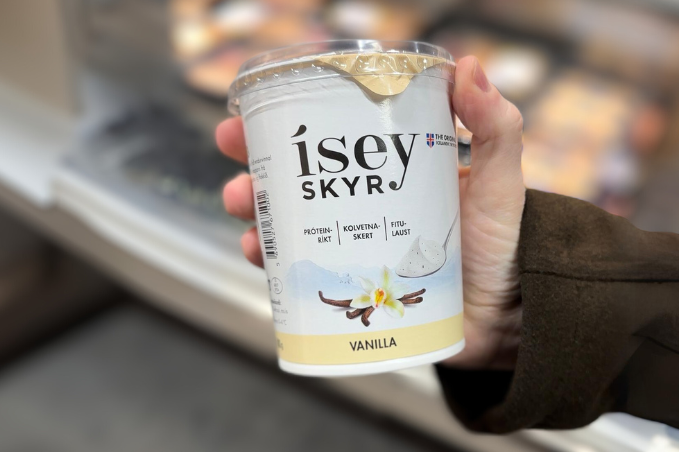
Last but not least, we have Skyr, this dairy product somewhere between cream cheese and yogurt has in recent years become internationally renowned but has been a regular staple in Icelanders since the time of the settlement of the island. Skyr is made from cow's milk. Skim milk, with its low-fat content, is traditionally used. Once the milk has been separated from the cream, it is heated to around 73 C (approximately 165 F) for about 15 to 20 seconds before cooling it back down to about 37 C(roughly 99 F). Unique live cultures are then added, often taken from a previous batch of skyr, including live bacteria and rennet. This process makes the milk turn from a thin, watery product into thick, creamy skyr. After fermenting for around five hours, the producers cool the product to18 C (approximately 64 F). Once it has thickened, it's ready to be strained. Straining off the whey makes skyr even thicker. Whey is the watery by-product of the skyr-making process. Skyr is very high in protein but low in fat which makes it a healthy and nutritious food. For example, a 200-gram (7-ounce) tub of KEA skyr contains approximately 24 grams (0.85 ounces) of protein. It also has less than 0.6 grams (0.003 ounces) of fat. Since it's also made from cow's milk, it is high in calcium and B vitamins. You can find Skyr in plain form or with added flavors that go from the traditional like vanilla and blueberry to more exotic ones like mango or coconut. Skyr can be eaten as a savory as well as a dessert and can often be found on menus at restaurants in cheesecake form.
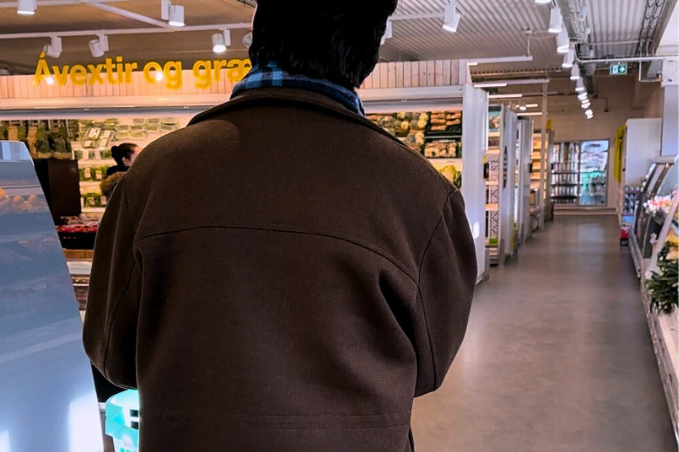
We hope this has helped you find a taste of Iceland during your visit. We encourage you to visit the supermarket and get some of what we have mentioned in this blog. For those of you staying in Þingholt Apartments from Center Hotels then why not get yourself a traditional Icelandic breakfast of Skyr, blueberries, flatkaka, smjör (butter), and hangikjöt. If you´re feeling adventurous, why not add bits of lifrarpylsa to your morning Skyr and drown it in heavy cream.

